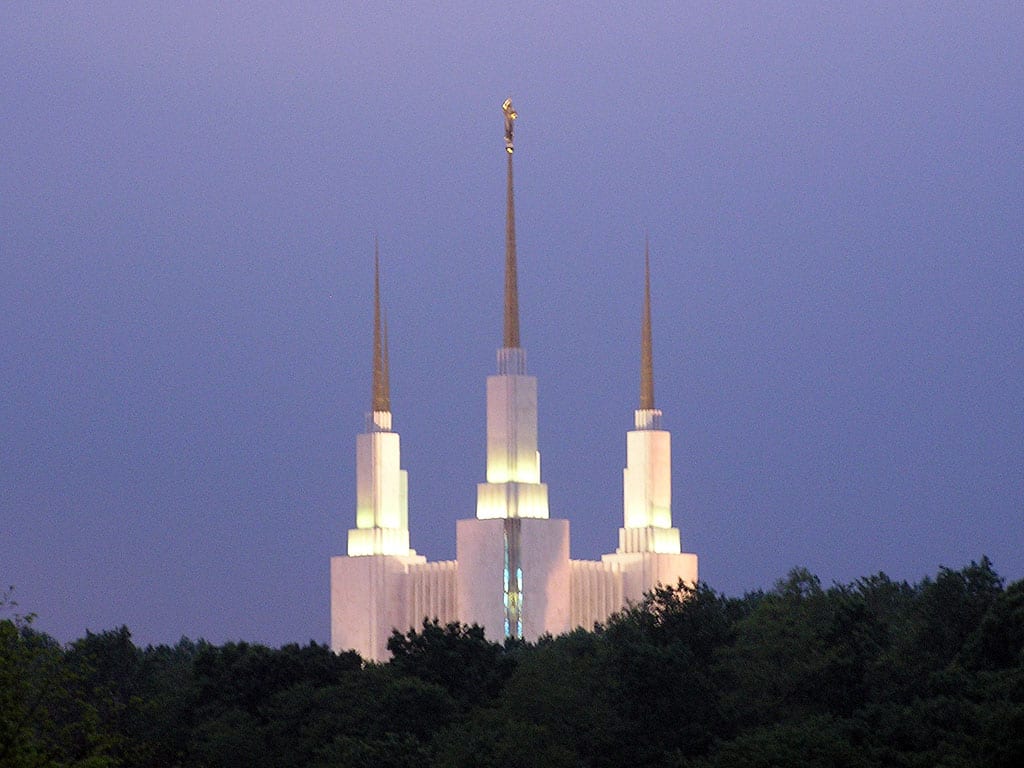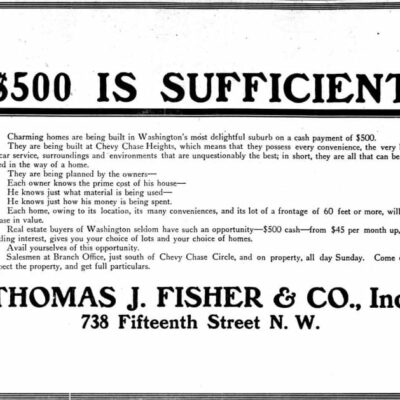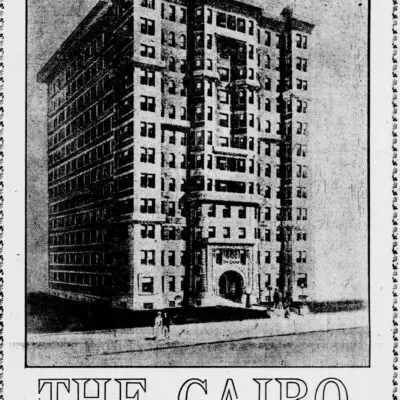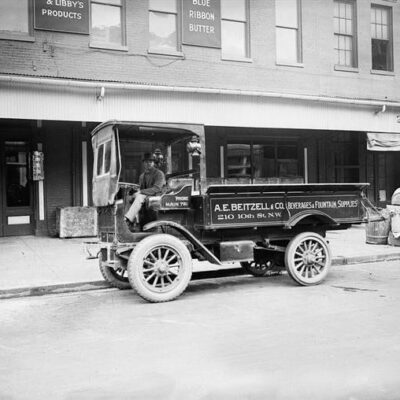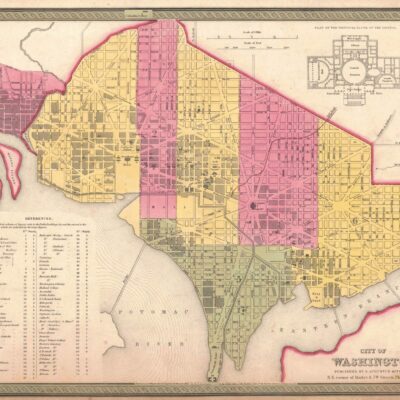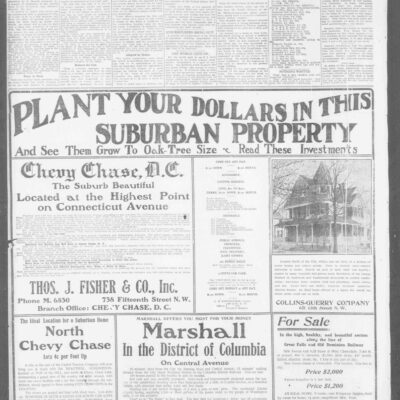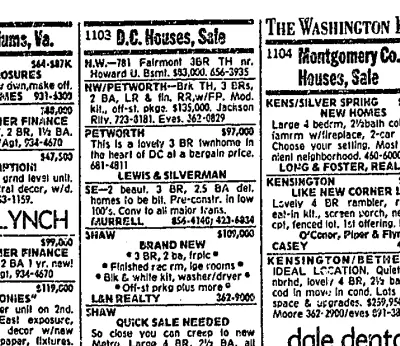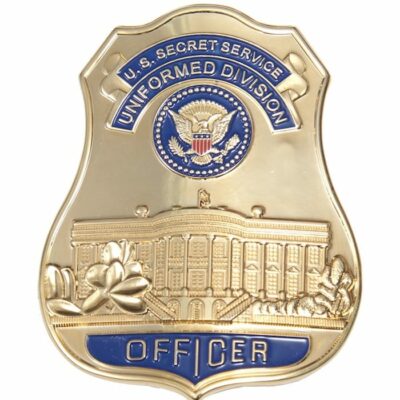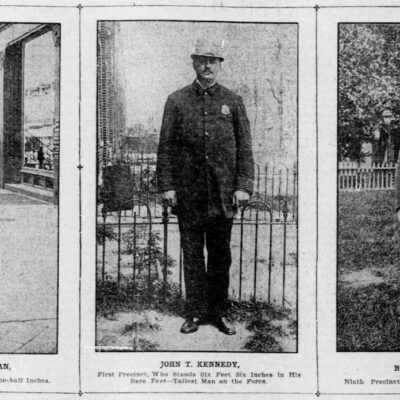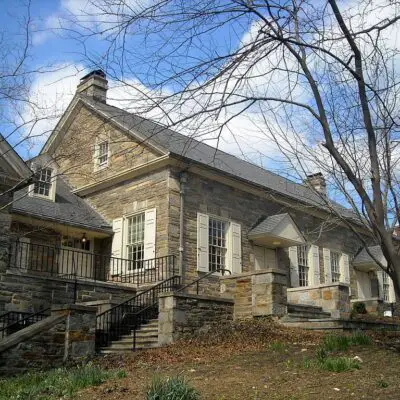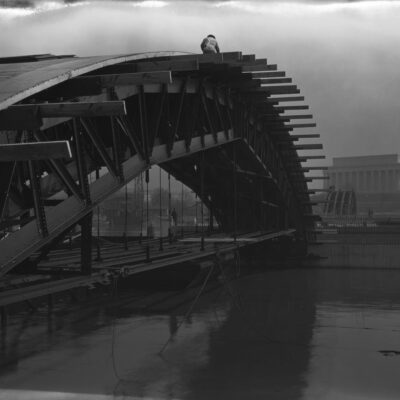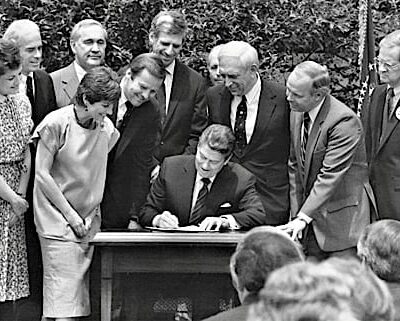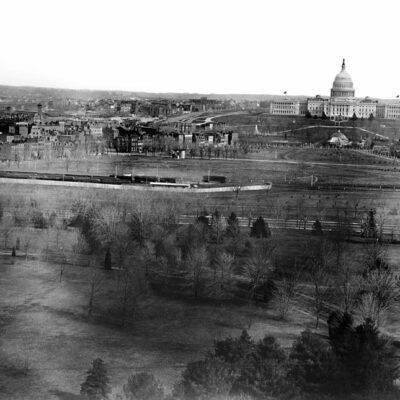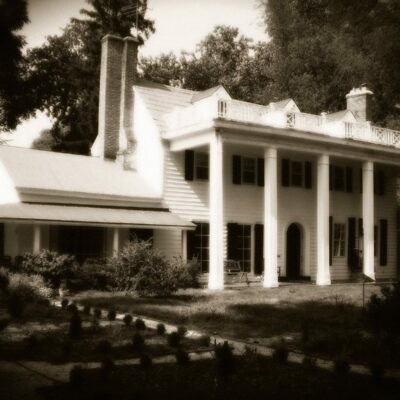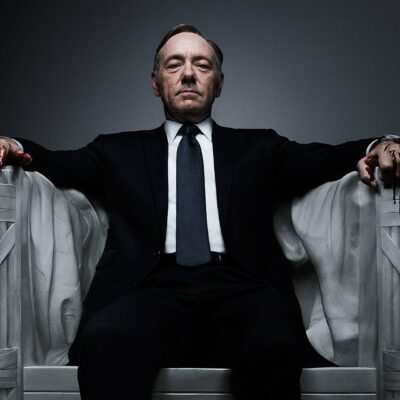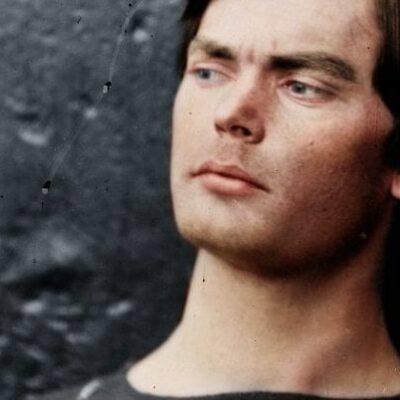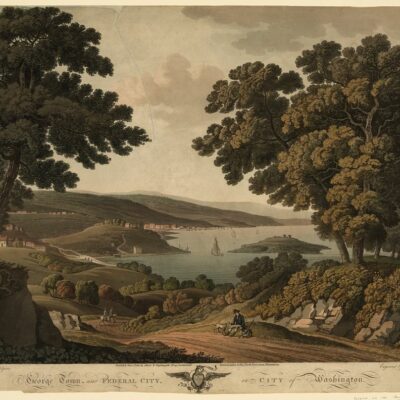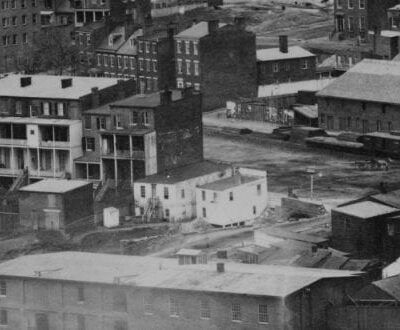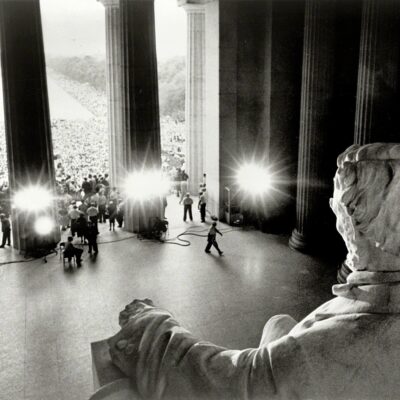You know you’re intensely fascinated by the Rock Creek Temple in Kensington, Maryland. The six spire temple, rising on the edge of Rock Creek Park, is easily visible on the Capital Beltway (read some Beltway history) between the Georgia Ave. and Connecticut Ave. exits.
The massive structure, the first Mormon temple east of the Mississippi river since the original Nauvoo Temple, was completed in 1974 at a cost of $15 million. Based on the Salt Lake Temple’s design, it’s built from Alabama marble, is the tallest U.S. temple at 288 feet and the third-largest.
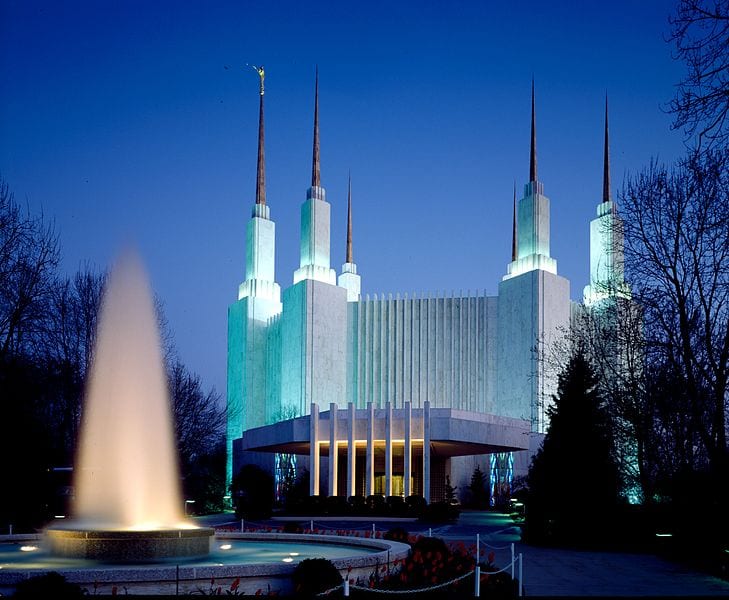
Evidently, in order to gain admittance to the temple, one must not only be an exemplar Mormon, a full 10% of your annual income must be donated to The Church of Jesus Christ of Latter-day Saints. After that, you have to make sure you have your annual “temple recommend” renewed by a bishop who evaluates your worthiness.
Whatever your opinion may be of Mormonism, their rising influence is abundantly clear, with the Republican presidential candidate and current U.S. Senate Majority Leader both being members of The Church of Jesus Christ of Latter-day Saints.
So, GoDC will focus on this prominent Mormon citadel on a hill, just outside of the District.
1. Mormons hope to build temple near Washington
The temple just outside the Beltway started as the dream of the local Mormon community, to have their own, impressive house of worship. One so impressive, that people would come from hundreds and thousands of miles to see and worship in it.
The Washington Post wrote a story on New Year’s Eve, 1966 about a movement slowly gaining steam in the area to build this temple.
Washington area Mormons made lengthy strides this year on a multi-million-dollar building program, which they hope will be crowned by construction of a temple, the first east of the Mississippi on a 57-acre tract north of the Beltway.
“Several general authorities of the church have visited the site and expressed themselves in favor of a temple here,” Milan Smith, president of the Washington Stake district said yesterday.
The tract, which cost between $800,000 and $900,000 in 1962, is located in Kensington about seven blocks east of Connecticut Avenue.
In Salt Lake City, a Spokesman for David O. McKay, 93-year-old president of the Church of Jesus Chris of Latter-day Saints, said no final decision had been made about use of the property.
Smith pointed out that President McKay has “traditionally” visited every proposed temple site before giving his approval.
In Mormon temples, marriages are performed in which the bride and groom are “sealed” to each other for eternity, church members are vicariously baptized for their ancestors, and (in the Salt Lake City temple) the first Presidency meets with the Council of the Twelve. Of the 13 existing temples, eight are in the United States, including four in Utah.
Since the first Washington Mormon congregation was formed in 1900 in the home of Sen. Reed Smoot, Mormon membership in the area has grown to more than 10,000.
For many years the only Mormon church building in Washington was familiar monumental chapel at 16th and Harvard Streets nw. erected in 1933.
At the beginning of the 1960s, however, a massive construction campaign began which has resulted in eight additional chapels. Three more are under construction. The buildings are valued at more than $3 million.
Mormons here belong either to the Washington Stake, north of the Potomac River, or to the Potomac Stake, to the south. The stakes, which are divided into wards (parishes), correlate their building programs with that of the national church; church headquarters in Salt Lake City provides 60 per cent of building costs and the local wards the other 40 per cent.
…
Besides their many church buildings, Mormons in the Washington area own and operate a 600-acre mechanized dairy farm in Trappe, near Easton on the Eastern Shore of Maryland, called Bountiful Farms. There are 215 milkers in the herd of more than 400 cows.

2. Construction completed with the sealing of a time capsule
Construction was coming to a close when the Washington Post published a story on September 10th, 1974 about the shining new temple.
Spencer W. Kimball, worldwide president and “prophet, seer and revelator” of the 3.3 million-member Church of Jesus Christ of Latter-day Saints, yesterday cemented a time capsule into the cornerstone of the church’s newest temple, marking the completion of the golden-spired edifice just off the Capitol [sic] Beltway in Kensington.
In an outdoor ceremony before a specially invited audience of some 300 leaders of the church, government officials and the press, President Kimball declared that the structure was built “for eternity.”
…
Once a Mormon temple has been formally dedicated, only members who carry a “temple recommend”–a certification of their devotion to their faith–may enter.
In the Mormon faith, a temple is not used for worship services but for special rites. In a press conference following the ceremonies, President Kimball said the new $15 million structure will be used for “marriages for time and eternity” and for “work for the dead.”
Mormons believe in proxy baptisms for the dead as well as other rites designed to assure the dead of a higher place in the after life. Faithful members are obligated to work for the salvation of the souls of the dead as well as the living.
Asked why he thought the Mormon church is growing so rapidly while other churches are losing members, President Kimball replied: “Because we teach the truth. If the people of this world knew what we know, many more would join the church.” He said Mormon membership has tripled since the early 1940s.
…
Included in the time capsule buried in the cornerstone yesterday, were copies of yesterday’s newspapers, the Bible and other books sacred to Mormons and a copy of a letter written by Brigham Young to the Secretary of War in 1845, bidding for a contract to build forts for the government along the trails to the West.
Church officials reported that they have been “overwhelmed” by the public demand for tickets to visit the temple.
The supply of 500,000 tickets printed is expected to be exhausted before the end of the week. As long as they last, tickets may be secured, free of charge, by calling 432-2500.

3. Gunman enters Mormon Temple, takes hostages
A horrifying series of events unfolded Wednesday night, October 22nd, 1986. The Washington Post wrote a piece on a terrifying hostage crisis at the Mormon Temple.
A man armed with a handgun forced his way into the Mormon Temple in Kensington last night and was reported to be holding at least one person at gunpoint there early today as Montgomery County police surrounded the white marble shrine.
One man who was held by the gunman managed to escape shortly after 2 a.m. and was reported unharmed.
Police said the incident began shortly after 8 p.m. when a man went to a rear basement door of the temple and tried to get in by displaying “an expired pass.”
Only members of the faith–the Church of Jesus Christ of Latter-day Saints–who have special permission from the church elders, called a “temple recommend,” are allowed into the building, and police said a security guard tried to deny the man admittance.
At that point, police said, the man produced a gun and entered, forcing the guard to accompany him. Police were called a few minutes later when the man was seen making his way to the temple’s upper floors with the guard.
Shortly before midnight, County Police Chief Bernard Crooke said police had just made contact with the gunman by two-way radio, apparently over a portable radio that the guard had been carrying.
About 2:15 a.m., Crooke said the police were “99 percent sure we have identified him,” although he declined to disclose who the gunman was thought to be. Crooke said the man was not from the Washington area, although he might have been staying here. He said some of the man’s relatives had arrived at the temple and that at least one other family member was being flown in from out of town.
Police said one man who had been held had escaped while the gunman was “distracted” and was being questioned by police. Police said at least one man was still being held, apparently on the temple’s seventh floor.
…
The chief said the man “seemed to be making sense,” but police negotiators were having a “hard time” getting their conversations with the man “off one subject.” He said that subject was not the Mormon church, but would not elaborate further.
The man entered the temple grounds–a fenced 57-acre tract at 9900 Stoneybrook Dr. just outside the Capital Beltway–in a car, Crooke said.
The incident came to a peaceful end after 12 harrowing hours with more than 50 police officers on the scene.
Leake was 29, and a member of the church since 1978, living in Centreville at the time, sporadically attending his home church in Langley During the ordeal, his hostages saw him place ammunition in the middle of the temple’s assembly room and turned on the radio to listen to the World Series. That night was game four of the famed Mets vs. Red Sox match-up (i.e., Buckner’s tragic error was game six of that series).
To make matters even more bizarre, he released one of his hostages because “he seemed pale.”
A month later, Leake was indicted in Montgomery County (why is it named Montgomery County?) and his mental health was questioned by defense attorneys. To mental health professionals testified that he asked his attorneys to subpoena 14 Mormon prophets, long-since deceased, because he was convinced they had been resurrected and had witnessed the course of events. He also stated that he had been called by God to cast out the demons on the seventh floor of the temple.
On June 24th, 1988, he was found guilty of assault and false imprisonment, after the jury deliberated for eight hours. However, he was not found “criminally responsible” for reasons of insanity on the two counts.
